Thank you so much for your interest in our Teddy Bear Goldendoodles, Schnoodles, and Twoodles!
Our Teddy Bear Schnoodles range between Extra Small, Small, Medium & Giant. The parent lineage will influence the size of your Schnoodle. You can expect that your puppy’s size will be an average of the parents’ sizes. Also, note that the size of the Schnoodle is determined by height, not by weight. We can give you an approximate weight for each of the four sizes, but that can vary based on the individual dog’s lifestyle.
Following is the current sizing for our beloved Schnoodle puppies:
This size is one of the smallest puppies of all of our Smeraglia Teddy Bear breeds. If you want a tiny puppy, our Extra-Small Mini Teddy Bear Schnoodle might be the perfect size for you. These puppies typically have parents who are toy poodles, small Schnoodles, and small schnauzers.
• The average size for an Extra Small Teddybear Schnoodle is approximately 9-11" (from the shoulder to the paw), with no correlation between height and sex of the Small Teddy Bear Schnoodle
• The weight range tends to be 3-12 pounds
• Generations : F1, F1B, F1BB, F2B
• Fees may be added for additional services to include delivery, spay/neuter, prep school, rare colors, etc.; Merle being the rarest.
• Extra Small Teddy Bear Schnoodles are kept in our nursery until 9-12 weeks based on size and maturity. They must be 3 lbs or 12 weeks of age to be released.
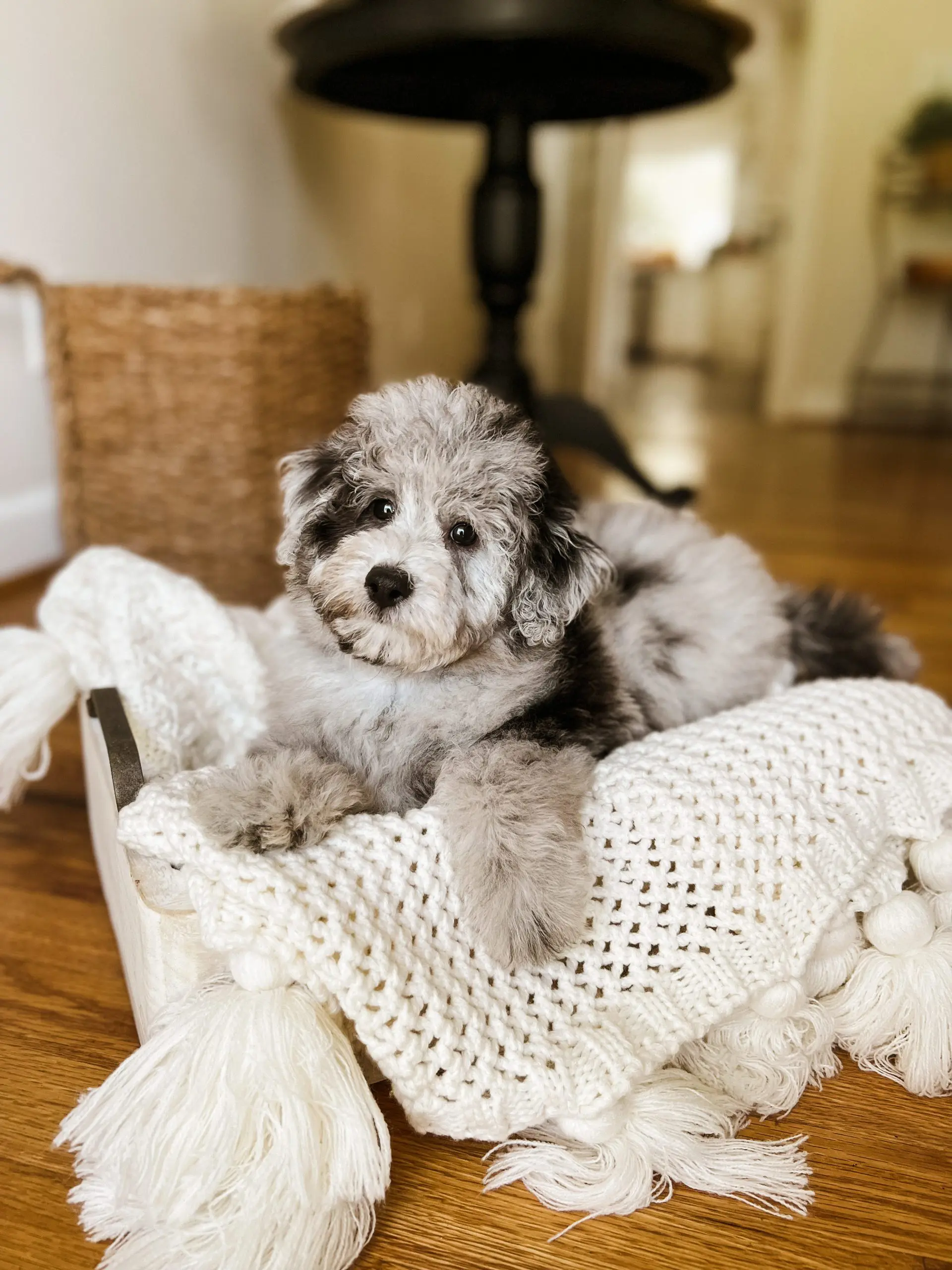
Our Small Teddy Bear Schnoodle is our most popular size. Most people don't realize how much goes into breeding smaller puppies. Each of our litters has a very detailed process which has taken years of planning. Parents of these litters are usually miniature or toy poodles and miniature schnauzers.
• The average size for a Small Teddy Bear Schnoodle is approximately 11" - 15" (from the shoulder to the paw), with no correlation between height and sex of the Small Teddy Bear Schnoodle.
• The weight range tends to be 13-25 pounds, the average being 14-18 pound
• Generations: F1, F1B, F2B, and F
•Fees may be added for additional services to include delivery, spay/neuter, prep school, rare colors, etc.; Merle being the rarest.
• Small Schnoodles are kept in our nursery until nine weeks of age, and some may be required to stay until 12 weeks of age based on their maturity.
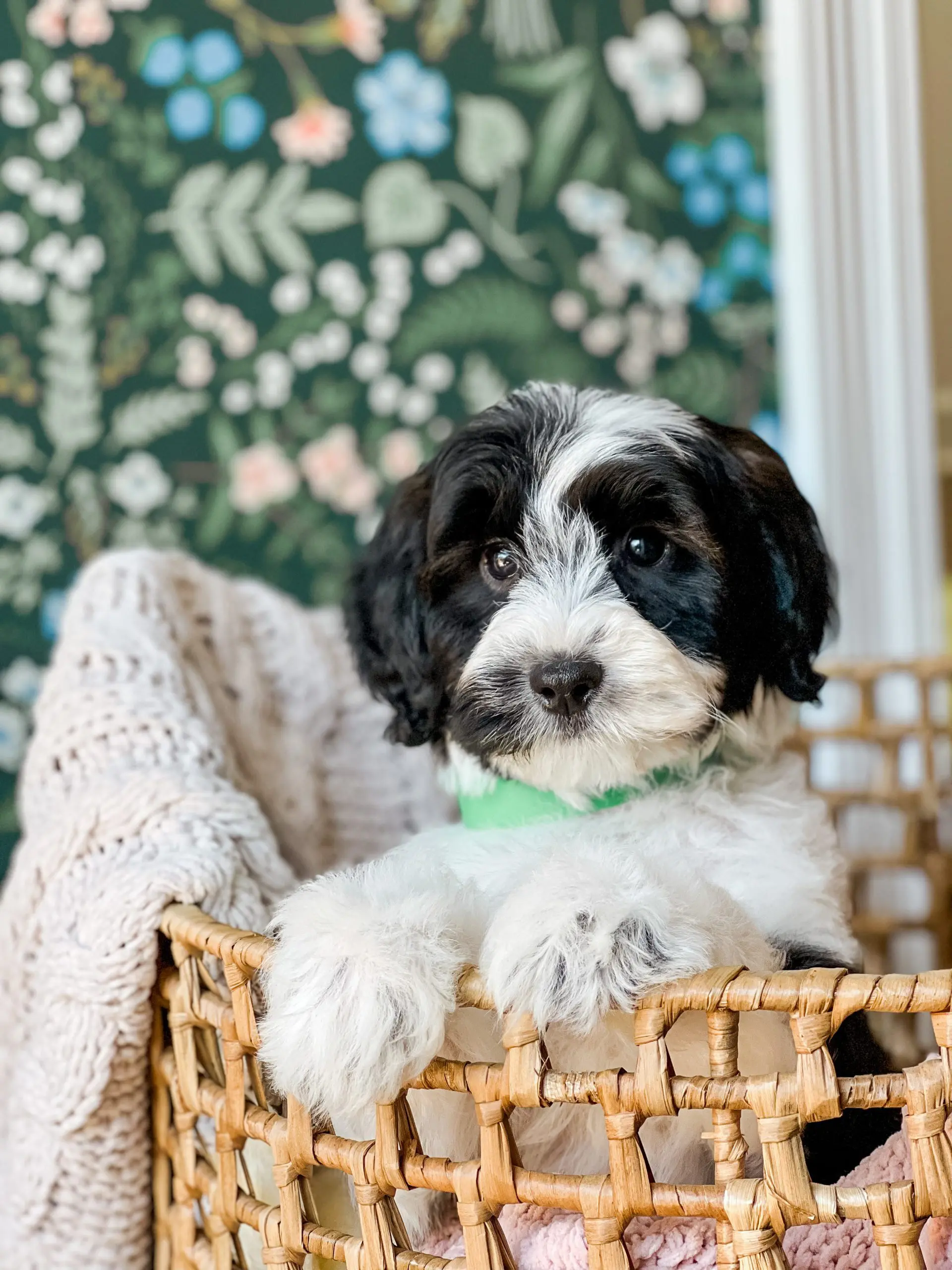
Medium Teddy Bear Schnoodles are a little more limited, but very sought-after breeding here at Smeraglia. Each of these litters takes 2-4 years of planning to produce. Due to their popularity, these spots often fill up quickly. Miniature poodles and giant Schnoodles produce our medium schnoodle puppies.
• The normal size for a medium Teddy Bear Schnoodle is 16"-19" (from the shoulder to the paw), with no correlation between height and sex of the medium English Goldendoodle.
• The approximate Weight range tends to be 25-48 pounds.
• Generations F1, F1B, F2, F2B, and F3
• Fees may be added for additional services to include delivery, spay/neuter, prep school, rare colors, etc.; Merle being the rarest.
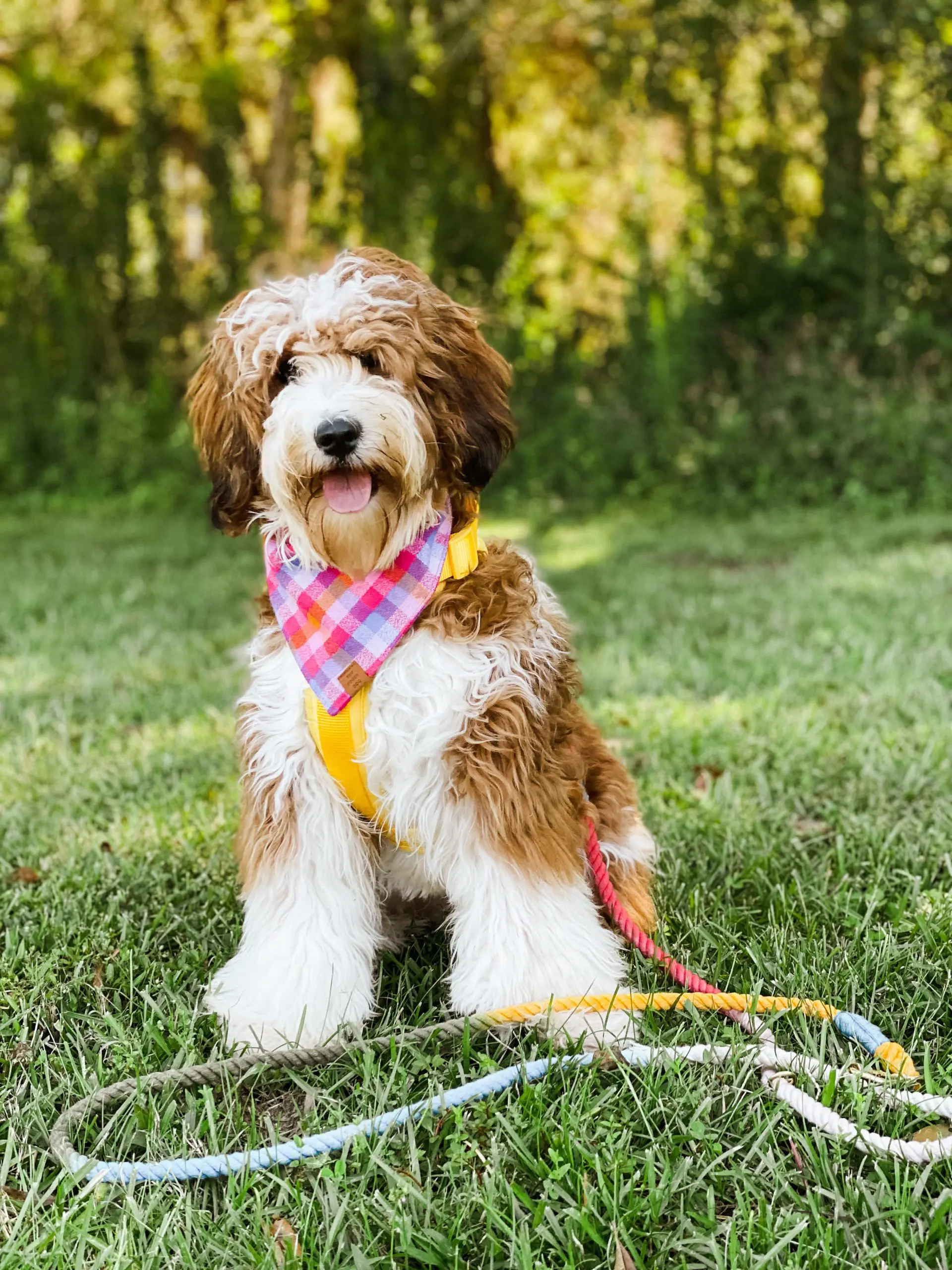
The BIGGER, the BETTER when it comes to Teddy Bears, and this is the BIGGEST Schnoodle we make! Our Giant Teddy Bear Schnoodles are super popular with our clients that want a BIG hunk of Love that you can literally hang onto. While they make wonderful pets and family companions, we breed this size primarily for our Service & Therapy dog clients for stability support dogs; therefore, spots are very limited. The parents of our Giant Teddy Bear Schnoodles are Giant Schnauzers, Standard Poodles & Giant Schnoodles.
• The normal size for a Giant Female Teddy Bear Schnoodle is 18" - 23" (from the shoulder to the paw), and 20" - 25" (from the shoulder to the paw) for Male Giant Teddy Bear Schnoodles
• The weight range tends to be 50-85+ pounds
•Generations: F1, F1B, F2 & F2B
• Fees may be added for additional services to include spay/neuter, prep school, rare colors, etc.; Merle being the most rare.
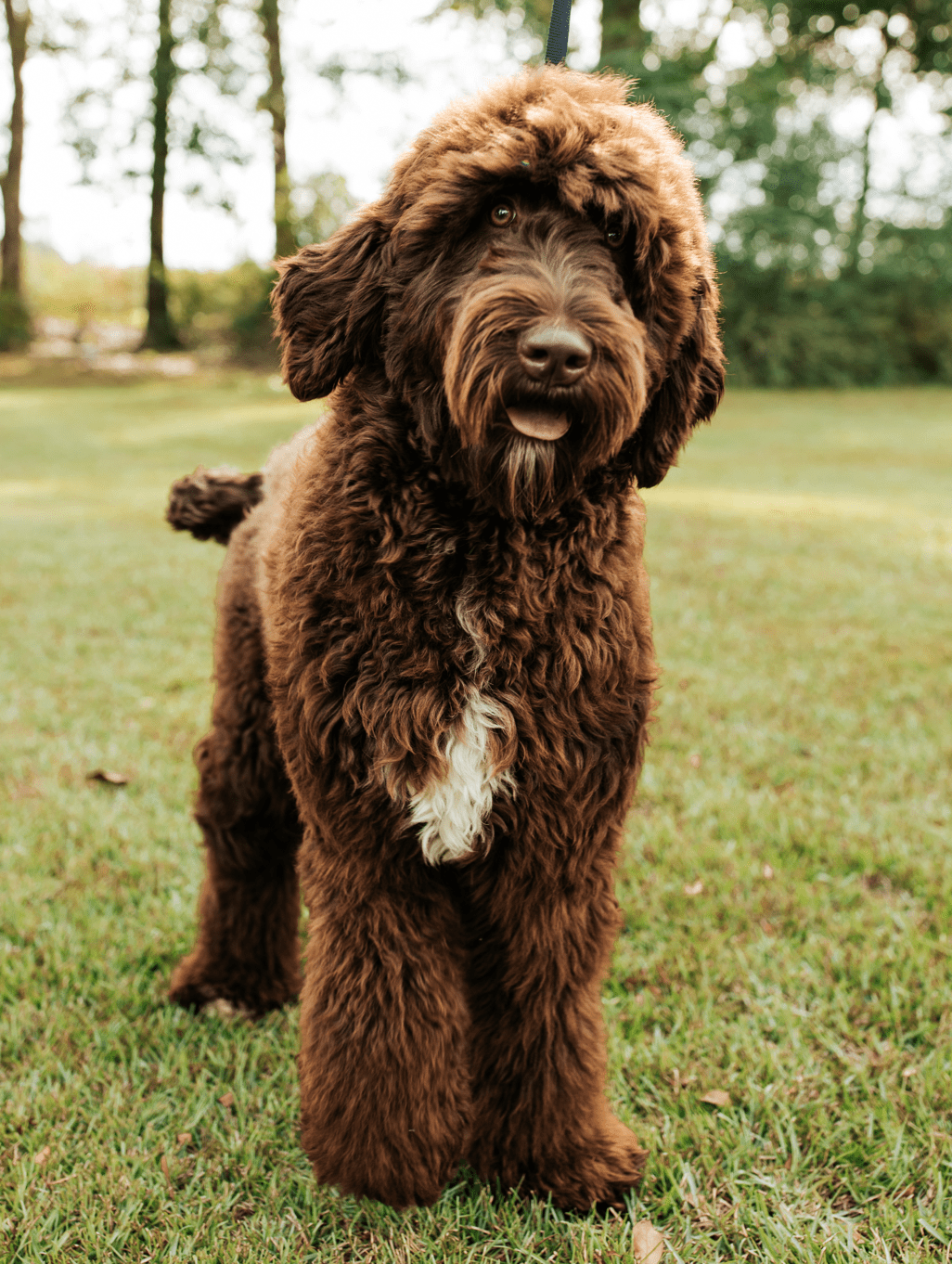
Please note that the coat of the Small Schnooodle in the example image has been clipped down to show the dog’s true size. A full coat will make the dog appear larger than the average size listed above.
Our Schnoodles are bred in many different colors and markings, and they’re all gorgeous.
Take a look below to see their impressive variety. Please note: Due to high demand, you should expect a minimum of 4-6 months before your puppy is born. Rare colors could take a bit longer. Speak to your adoption specialist for more information
The Schnoodle should have a Loose-Wavy to Curly coat of about two to three inches in length.
The colors of a Schnoodles coat can be Black, Copper, Ultra Cream, Champagne, Gray, Golden, Apricot, Red, Red & White, or Parti. Ultra cream to champagne is our most common coat color. You can often find lighter highlights on the feathering, and the coat tends to lighten with age. The hair on the tail, body, ears, and legs (legs may be slightly feathered) is usually longer. The hair on the head and muzzle tends to be shorter.
It can be produced in any of the Schnoodle generations and is easy to maintain. It will require brushing once a day to every other day in areas that experience heavy friction, such as behind the ears, under the neck, the base of the tail, and underneath the limbs. Full body brushing should be done at least once a week. This coat type in F1, F2, and F2B breedings is usually low to moderate in shedding.
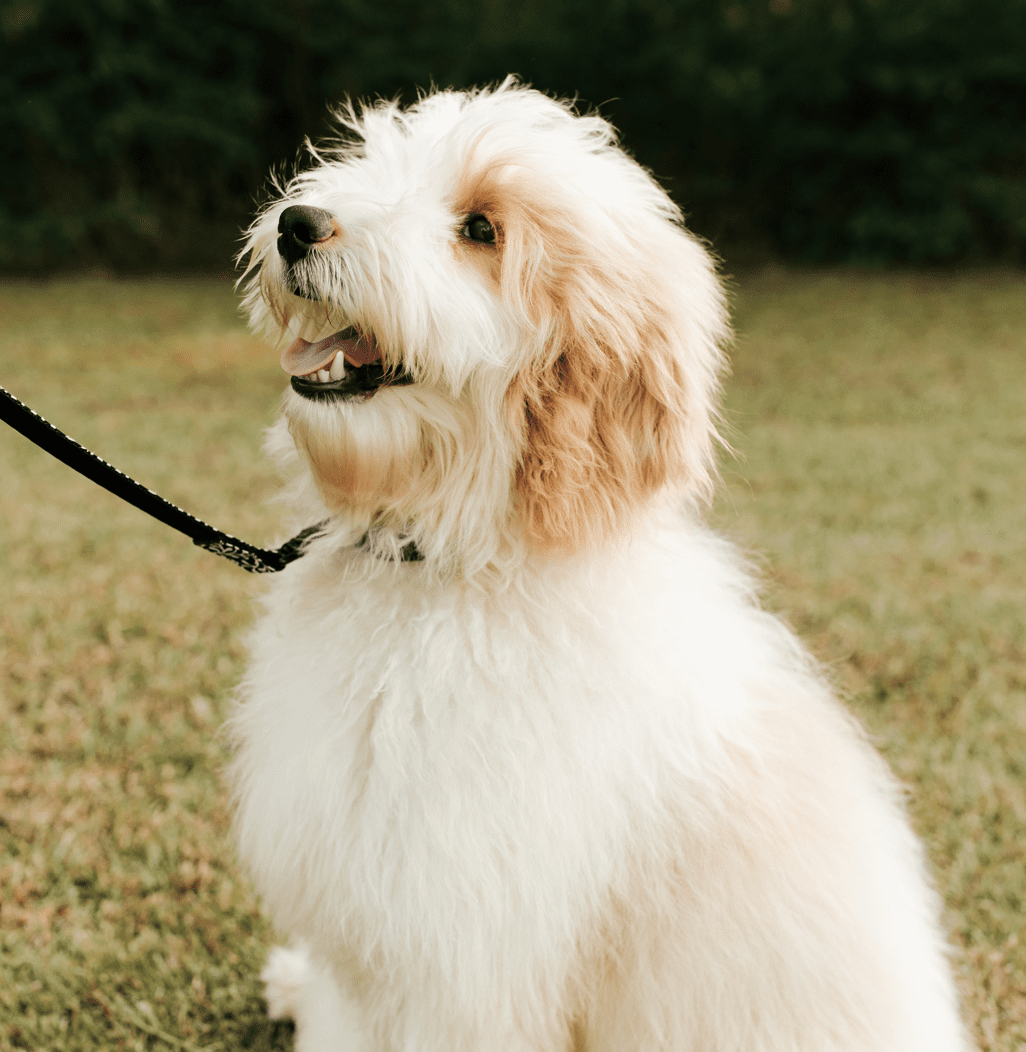
Schnoodles with curly coats are seen most frequently in our F1B and F3 breedings but can occasionally be produced in other generations. Curly coats can be anywhere from a loose barrel curl to a tight kinky curl, similar to a Poodle. They require daily full-body brushing. Curly coated Schnoodles in F1, F2, and F2B generations are considered the most non-shedding of these generations.
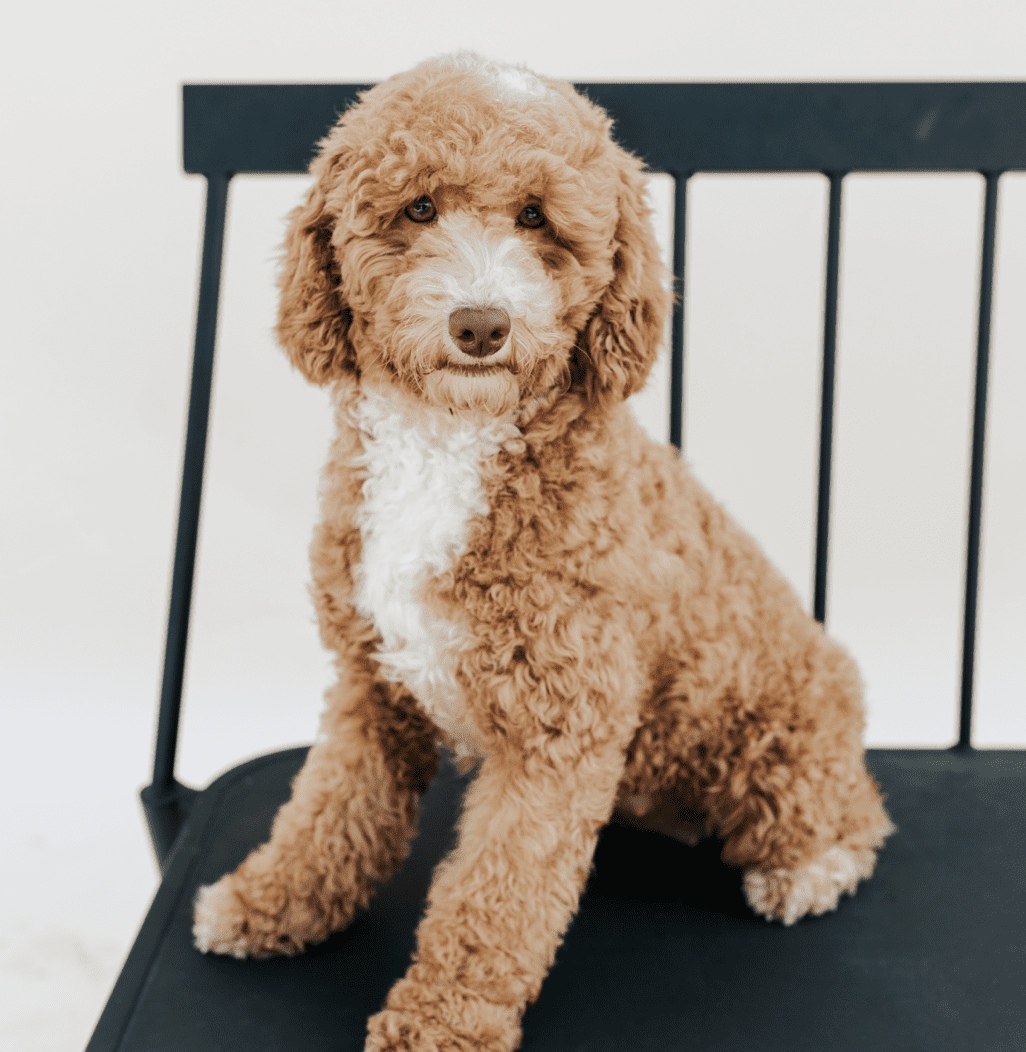
Schnoodle Coat Changes
Most will grow longer and many will fill out and become very plush and full. As an experienced breeder, we can determine at a very young age what type of coat a puppy will have as an adult:
It is our goal to offer superior, efficient service to all of our clients.
We offer a wide range of payment options for your convenience:
The Schnoodle should be athletic, graceful, and square with medium to large boning (depending on the size). The build should be square.
(To the wither) as to Length (from sternum to point of buttock) should appear square. Shoulders should have good angulation with firm elbows held close to the rib cage. The upright shoulder is a fault. Hindquarters should be of medium angulation with short strong hocks. The top line should remain level with strong loin and level croup. They are a galloping dog, therefore flanks should rise up from a brisket set just below the elbows but should not be excessively deep. Ribs should be well sprung but not barrelled. Overall, they should appear square, balanced, athletic with good muscling.
When trotting they should be purposeful, strong, and elastic with good reach and drive, giving the appearance of “going somewhere”. When happy, relaxed, or at play, they will prance and skim the ground lightly. Excessive tightness in the hips will produce a stilted action and is considered a fault.
Set relatively high and preferred to be carried in a saber, can be carried below the top line or slightly above with a slight curl. Curled possum-type tails are undesirable.
Set moderately flat against the head. The base should be level with the eye, or close to it. Leather should be of medium thickness and when gently drawn forward should reach the top canine tooth. Ear leather reaching beyond the tip of the nose is considered a fault. Ear canals should be free of excessive hair and not thick or bulbous. When inquisitive and alert, the ear set should rise to the top of the head. Thick/heavy ear leather is a fault.
“Slightly” round, large, and expressive. Always offering eye-to-eye contact when engaged in activity with a human. Protruding or sunken eyes are a fault. Watery or tearful eyes are a fault. Dogs with brown pigment can have dark hazel or brown eyes.
Eye color should complement and blend with the face color. Black, red, white, cream and apricot usually have brown/black eyes. Most all shades of champagne and chocolate will have hazel eyes. Black pigment dogs usually have dark/brown eyes.
Large, square and fleshy. Pigment should be either black or brown (for parti colors it may be freckled). Pigment should be strong.
The firm well-muscled neck should be moderately long, slightly arched, and flow well into the well-angled shoulders with no appearance of abruptness. The neck should not be coarse nor stumpy and should lend an air of elegance to the dog. A short thick neck is a fault.
The first step in finding your new forever friend.
Apply Now